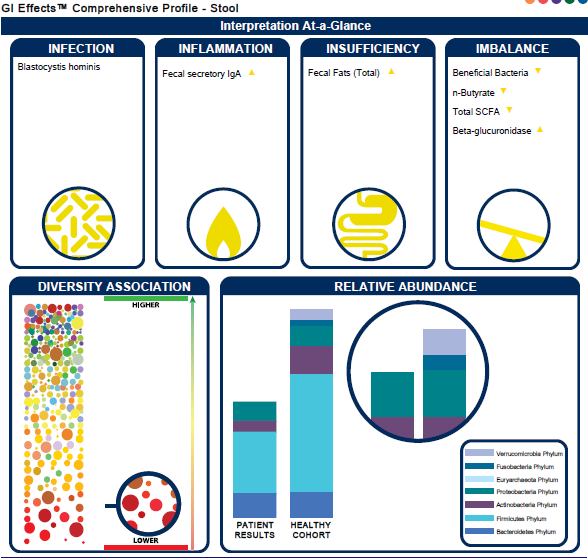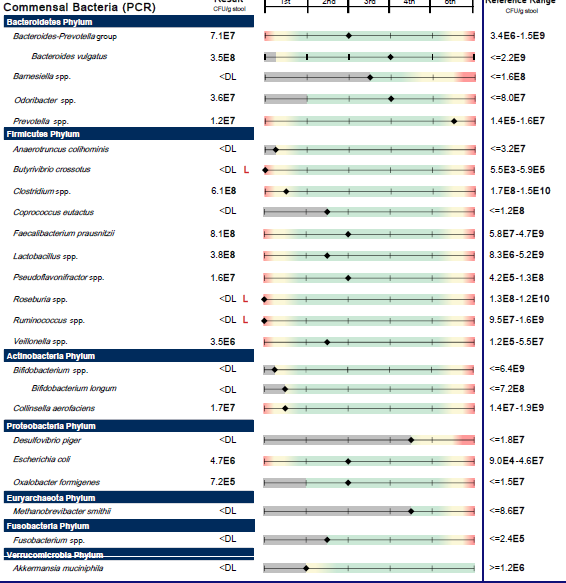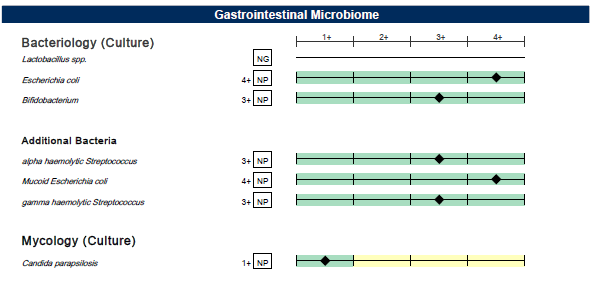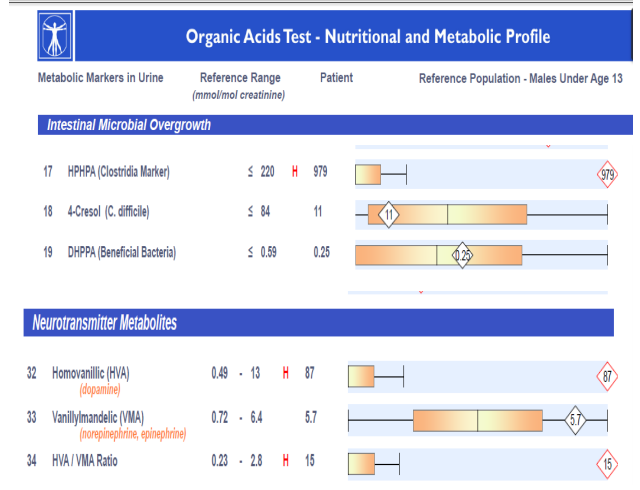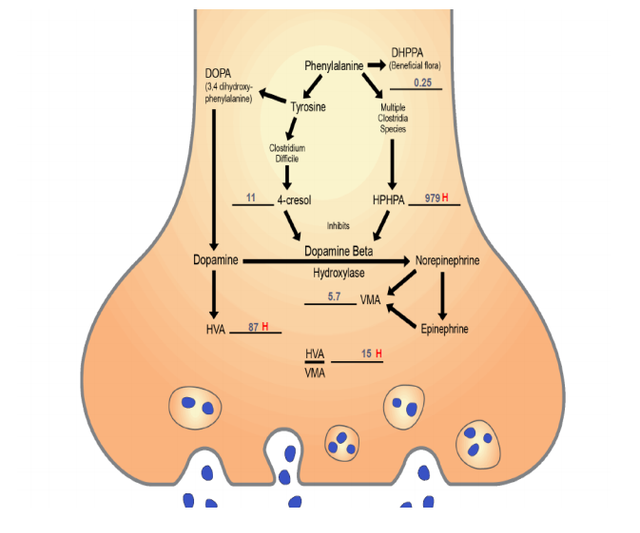Some of you probably know that I study nutritional therapy. My course content is geared toward functional medicine, so I have been lucky enough to learn quite a lot about how to read various tests from one of my lecturers. On top of that, throughout the past few months I have spent significant amounts of my own time attempting to understand the biochemistry that underlies the various markers involved in these tests. I will be honest and say that it is NOT easy and it is certainly not for everyone, but it has been totally worth it - so much so that I have decided to enrol in professional training in functional medicine in October 2018.
Just a quick definition of what I am talking about: Medical diagnostic testing is performed by biomedical labs for doctors and measures specific biomarkers which can be used to diagnose a specific pathological condition. On the other hand, functional testing is not necessarily used to diagnose pathology, but is instead designed to assess imbalances in physiological function, and basically measure how well things function. Regular doctors are not trained in reading these tests unless they have specifically undergone training in functional medicine.
I started this post to demonstrate how guess-work with supplementation can sometimes be a waste of time and a waste of money in a complex case. I have learnt this through my own experience.
A brief history of my health problems:
-Up until I was 18yo, I was in fairly good health. No major digestive issues and nothing else that was too concerning.
-I went backpacking through India for 9 months at age 18, and experienced several bouts of gut infection and diarrhoea.
- Since returning back, I developed severe IBS characterised mainly by diarrhoea and abdominal pain, the onset of dandruff, bloating, fatigue etc. Low libido also set in.
- I tried various dietary approaches: Paleo, Ketosis, Elimination type diets, lower-fat etc
- I spent probably at least £2000 on supplements, and saw only moderate benefits.
In March 2017, I decided to invest the money on a GI Effects functional test by Genova Diagnostics. This is NOT a medical test, and medical doctors do not know how to read or interpret such tests.
Here were my results:

Without explaining ALL of the markers, I will just go into the points of concern:
- Protein breakdown & fat digestion were good. A later result for pancreatic elastase (pacreatic enzyme function) came up OK. This answered questions I had about my ability to breakdown food--- it was good.
- IBD was very unlikely, due to low Calprotectin etc.
MAIN IMPORTANT POINTS:
-Elevated fecal secretory IgA: This is an immunoglobulin which is produced by the mucosal cells in the gut. If it is too low, or too high (like in my case), it suggests the gut is trying very hard to fight off some pathogen or other irritating substance.
-Highly elevated Betaglucuronidase!: To excrete certain waste products, toxins, and estrogens, the liver undergoes the process of "glucuronidation". This is part of phase 2 liver detoxification. It functions by attaching a glucuronic acid to a substance it wants to get rid of, and carries this complex into the intestines. Normally, this can then be excreted into the faeces.
However, as part of normal bacterial metabolism, certain gram-negative bacteria produce this enzyme called "Beta glucuronidase". This enzyme detaches the glucuronic acid from the substance to "free it up" in the intestine. The result is that the toxin is reabsorbed and needs to be processed again.
Key insights derived from this finding are: I had some sort of dybsiosis involving betaglucuronidase producing bacteria. Secondly, my liver was being put under stress. Finally, I was overburdened with estrogen because I could not detoxify it properly.
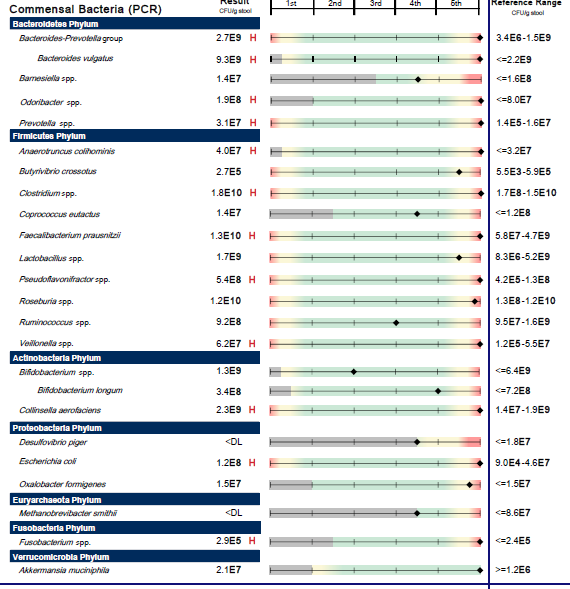
This is showing the levels of "commensal bacteria", which basically refers to ordinary species of bacteria which populate the gut. This is testing via a method called PCR whereby they measure the DNA of various species. It is a fairly new technology and seems to be the best out there so far.
In contrast with many other tests I have seen, I had very high levels of bacteria. There are some who have LOW levels, and some who have practically zero on the test. Mine was the opposite as you can see above.
Important points worth noting
See the "H" next to various species - this means I had higher than normal levels of bacteria in the colon. Just to note, this is NOT a common finding from what I understand. I believe it suggests that my immune system has a hard time at regulating the levels - as is reflected in my secretory IgA levels.
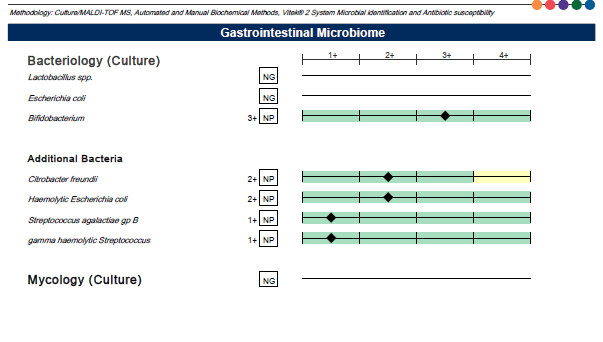
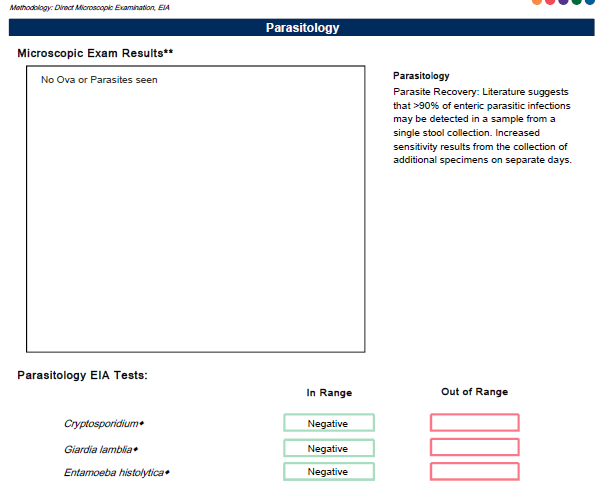
The above are traditional stool cultures. As you can see, no parasites were picked up on the stool culture, and no major gut infects either. No major candida either surprisingly.
Key insights from the whole test in general :
1. My gut immunity was being stressed by something
2. I had dysbiosis in the colon, as reflected in the high levels of bacteria of most species
3. My liver was being placed under stress because phase 2 detoxification was being reversed as soon as it entered the gut because of those pesky critters!
My suspicions: Due to symptoms coupled with the test results, I suspected SIBO. This test does not measure the upper intestine, so it is difficult to diagnose SIBO from these results alone. However, all things considered I embarked on a SIBO protocol.
Protocol: It involved various botanicals, anti microbials/fungals and biofilm disruptors etc. I undertook the treatment for around 2-3 months without stopping. In the first month, the results were AMAZING. My stool consistency normalised, I maintained very good motility (going 2-3 times per day at the same time each day), gas/bloating practically dissapeared, and I finally felt that I had conquered this thing.
Unfortunately, after finishing the first month protocol, the symptoms gradually came back. So to 'nip it in the bud', I devised a different protocol and continued for a further 2 months. This consisted of different botanicals etc. This time, I did not see any real benefits. Overall, I spent around £600 on these supplements (they were top of the range). Additionally, I spend £290 on the test. So overall, it was very expensive. In the end, I decided that the reason for my failure in this regard was because I did not have enough data to work with.
So... I was back to studying.
My reading led me to H.pylori. I tested that privately and unfortunately it came back negative. This was disconcerting for me, because I wanted answers!
In my search for more data, I learned of the Great Plains laboratory test and immediately fell in love with it.
Quite frankly, I now believe it is one of THE most useful tests in gaining an objective picture of "where you are at" physiologically speaking. I have learned a LOT since then. It has taken me a long time... hours of reading articles, papers, and maybe 30+ hours of webinars and lectures on the interpretation of this - but boy am I thankful - and I cant wait to start using it with my clients in practice. The next post will explain exactly why I am so fascinated with this test, and how it can help to investigate both physical and psychological issues many of us deal with. I now think it is indispensable for anyone dealing with anxiety, OCD, aggression, IBS, fatigue, methylation issues, obesity... the list goes on!
Just a quick definition of what I am talking about: Medical diagnostic testing is performed by biomedical labs for doctors and measures specific biomarkers which can be used to diagnose a specific pathological condition. On the other hand, functional testing is not necessarily used to diagnose pathology, but is instead designed to assess imbalances in physiological function, and basically measure how well things function. Regular doctors are not trained in reading these tests unless they have specifically undergone training in functional medicine.
I started this post to demonstrate how guess-work with supplementation can sometimes be a waste of time and a waste of money in a complex case. I have learnt this through my own experience.
A brief history of my health problems:
-Up until I was 18yo, I was in fairly good health. No major digestive issues and nothing else that was too concerning.
-I went backpacking through India for 9 months at age 18, and experienced several bouts of gut infection and diarrhoea.
- Since returning back, I developed severe IBS characterised mainly by diarrhoea and abdominal pain, the onset of dandruff, bloating, fatigue etc. Low libido also set in.
- I tried various dietary approaches: Paleo, Ketosis, Elimination type diets, lower-fat etc
- I spent probably at least £2000 on supplements, and saw only moderate benefits.
In March 2017, I decided to invest the money on a GI Effects functional test by Genova Diagnostics. This is NOT a medical test, and medical doctors do not know how to read or interpret such tests.
Here were my results:

Without explaining ALL of the markers, I will just go into the points of concern:
- Protein breakdown & fat digestion were good. A later result for pancreatic elastase (pacreatic enzyme function) came up OK. This answered questions I had about my ability to breakdown food--- it was good.
- IBD was very unlikely, due to low Calprotectin etc.
MAIN IMPORTANT POINTS:
-Elevated fecal secretory IgA: This is an immunoglobulin which is produced by the mucosal cells in the gut. If it is too low, or too high (like in my case), it suggests the gut is trying very hard to fight off some pathogen or other irritating substance.
-Highly elevated Betaglucuronidase!: To excrete certain waste products, toxins, and estrogens, the liver undergoes the process of "glucuronidation". This is part of phase 2 liver detoxification. It functions by attaching a glucuronic acid to a substance it wants to get rid of, and carries this complex into the intestines. Normally, this can then be excreted into the faeces.
However, as part of normal bacterial metabolism, certain gram-negative bacteria produce this enzyme called "Beta glucuronidase". This enzyme detaches the glucuronic acid from the substance to "free it up" in the intestine. The result is that the toxin is reabsorbed and needs to be processed again.
Key insights derived from this finding are: I had some sort of dybsiosis involving betaglucuronidase producing bacteria. Secondly, my liver was being put under stress. Finally, I was overburdened with estrogen because I could not detoxify it properly.

This is showing the levels of "commensal bacteria", which basically refers to ordinary species of bacteria which populate the gut. This is testing via a method called PCR whereby they measure the DNA of various species. It is a fairly new technology and seems to be the best out there so far.
In contrast with many other tests I have seen, I had very high levels of bacteria. There are some who have LOW levels, and some who have practically zero on the test. Mine was the opposite as you can see above.
Important points worth noting
See the "H" next to various species - this means I had higher than normal levels of bacteria in the colon. Just to note, this is NOT a common finding from what I understand. I believe it suggests that my immune system has a hard time at regulating the levels - as is reflected in my secretory IgA levels.


The above are traditional stool cultures. As you can see, no parasites were picked up on the stool culture, and no major gut infects either. No major candida either surprisingly.
Key insights from the whole test in general :
1. My gut immunity was being stressed by something
2. I had dysbiosis in the colon, as reflected in the high levels of bacteria of most species
3. My liver was being placed under stress because phase 2 detoxification was being reversed as soon as it entered the gut because of those pesky critters!
My suspicions: Due to symptoms coupled with the test results, I suspected SIBO. This test does not measure the upper intestine, so it is difficult to diagnose SIBO from these results alone. However, all things considered I embarked on a SIBO protocol.
Protocol: It involved various botanicals, anti microbials/fungals and biofilm disruptors etc. I undertook the treatment for around 2-3 months without stopping. In the first month, the results were AMAZING. My stool consistency normalised, I maintained very good motility (going 2-3 times per day at the same time each day), gas/bloating practically dissapeared, and I finally felt that I had conquered this thing.
Unfortunately, after finishing the first month protocol, the symptoms gradually came back. So to 'nip it in the bud', I devised a different protocol and continued for a further 2 months. This consisted of different botanicals etc. This time, I did not see any real benefits. Overall, I spent around £600 on these supplements (they were top of the range). Additionally, I spend £290 on the test. So overall, it was very expensive. In the end, I decided that the reason for my failure in this regard was because I did not have enough data to work with.
So... I was back to studying.
My reading led me to H.pylori. I tested that privately and unfortunately it came back negative. This was disconcerting for me, because I wanted answers!
In my search for more data, I learned of the Great Plains laboratory test and immediately fell in love with it.
Quite frankly, I now believe it is one of THE most useful tests in gaining an objective picture of "where you are at" physiologically speaking. I have learned a LOT since then. It has taken me a long time... hours of reading articles, papers, and maybe 30+ hours of webinars and lectures on the interpretation of this - but boy am I thankful - and I cant wait to start using it with my clients in practice. The next post will explain exactly why I am so fascinated with this test, and how it can help to investigate both physical and psychological issues many of us deal with. I now think it is indispensable for anyone dealing with anxiety, OCD, aggression, IBS, fatigue, methylation issues, obesity... the list goes on!


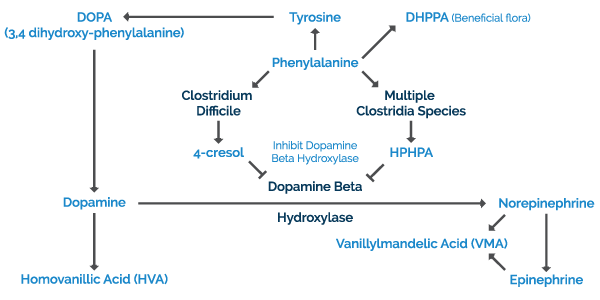


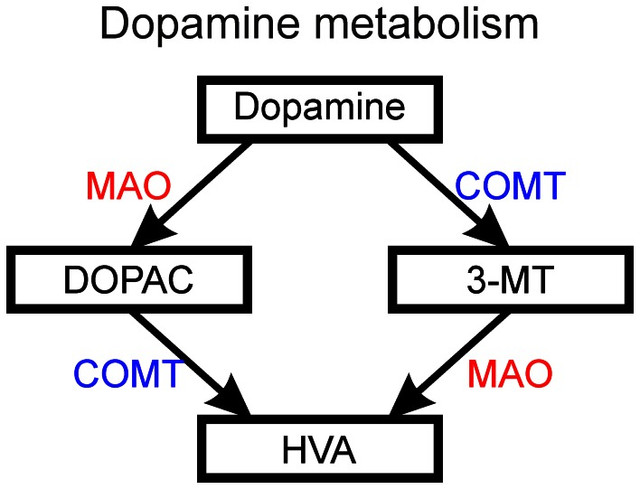





 ). Then it all went abit wrong when I went travelling with Keyhole. While I was there I contracted numerous stomach bugs and also salmonella which made it's way into the blood stream and was treated with antibiotics. After returning home I had repeated digestive issues which fluctuated between diarrhoea, bloating and fatigue, dietary changes seemed to aggravate these symptoms.
). Then it all went abit wrong when I went travelling with Keyhole. While I was there I contracted numerous stomach bugs and also salmonella which made it's way into the blood stream and was treated with antibiotics. After returning home I had repeated digestive issues which fluctuated between diarrhoea, bloating and fatigue, dietary changes seemed to aggravate these symptoms.